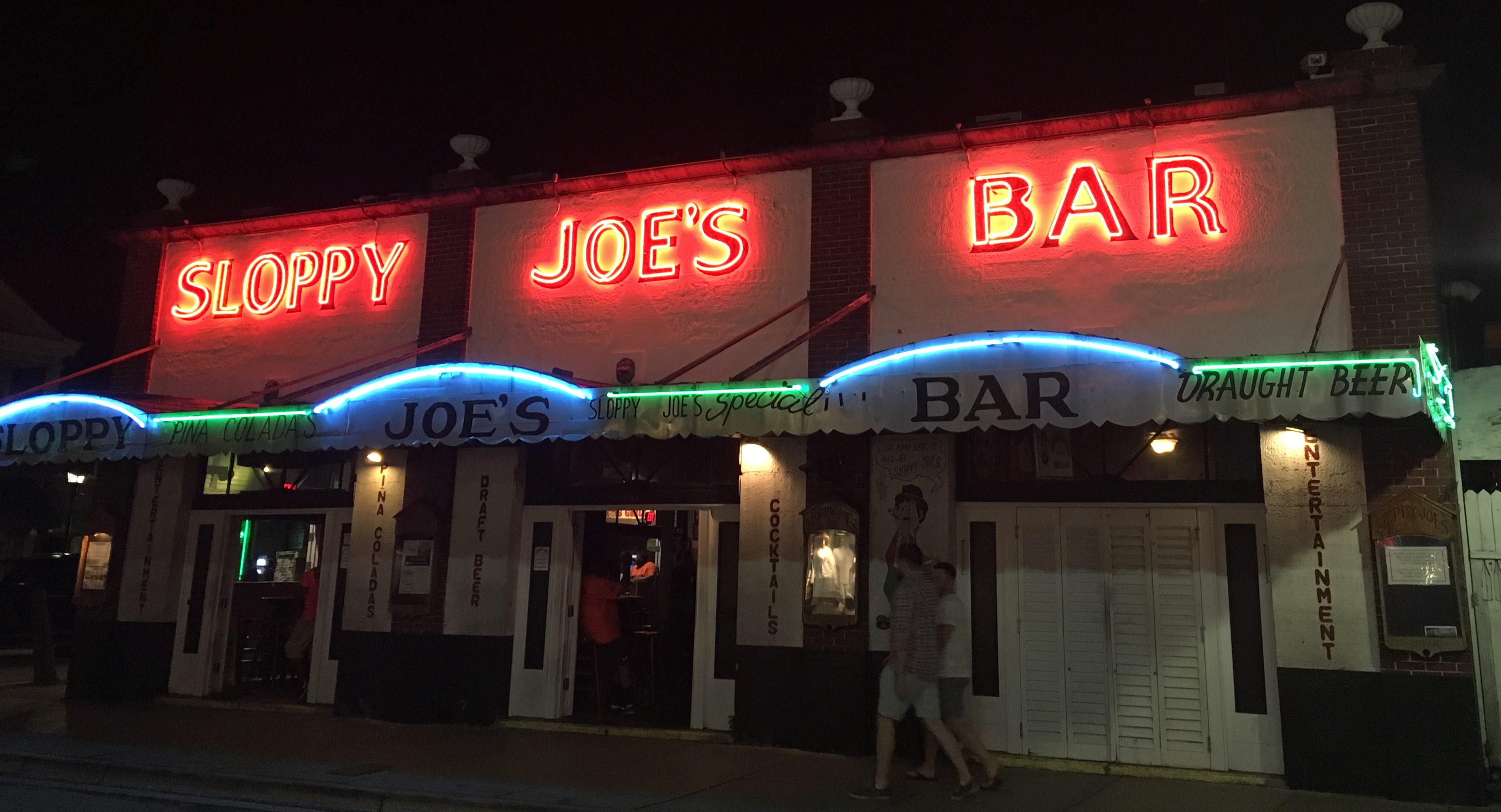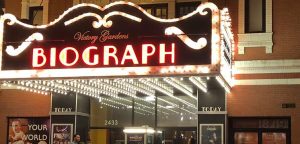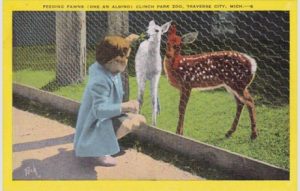As an avid fan of Hemingway, cigars and rum, Key West was a logical destination to celebrate my latest birthday on May 30. With just three full days (and a few extra hours), I had to focus to make the most of the trip while also relaxing and enjoying the island culture.
Of course, touring the 1851 Hemingway Home was the primary purpose for the visit. As a current resident of Walloon Lake (where Ernest Hemingway spent the first 22 summers of his life), I felt particularly drawn to this majestic and historic home.
Located at 907 Whitehead Street in the heart of Old Town Key West, Hemingway and his second-wife, Pauline Pfeiffer, purchase the abandoned home from the City of Key West in 1931 for a mere $8,000 in back taxes. The Hemingways moved in with their two sons, Patrick and Gregory, living on the estate until Ernest left for Cuba in 1940 (with Martha Gelhorn, who would become his third wife). Pauline stayed on with the boys until she passed away in 1951.
A walk through the two-story, 3,000-square foot home provides just a glimpse into the life of Papa Hemingway. Pictures of him and his four wives, manuscripts, typewriters, movie posters and several pieces of furniture original to the home during the Hemingway era adorn the rooms that he once entertained friends. An adjacent building used to connect to the main house by an elevated catwalk. It was here that Hemingway would spend his mornings writing classics such as “The Snows of Kilimanjaro,” “The Short Happy Life of Francis Macomber,” “Death in the Afternoon,” “Green Hills of Africa” and “To Have And Have Not.”
The lush grounds are full of towering palm trees, flowering scrubs and plants, meandering walkways and an in-ground swimming pool. More than 40 polydactyl (six- and seven-toed) cats roam the grounds, unbothered by the thousands of visitors who tour here each year (and undoubtedly want pictures with the photogenic felines—myself included). These cats even have their own Instagram account if you care to follow them more closely: www.instagram.com/hemingwayhomecats.
When he wasn’t writing, entertaining visitors or swimming in his salt-water pool, Hemingway was likely either out fishing the waters around Key West or bellied up to the bar at Sloppy Joe’s with his friend “Sloppy” Joe Russell.
Now, apparently there is some “controversy” involved in this whole bar history.
Ernie notably drank at the original Sloppy Joe’s (now known as Captain Tony’s Saloon) on Greene Street between 1933 and 1937…just a block away from the new and larger Sloppy Joe’s on the corner of Greene Street and the infamous Duval Street.
An article on Sun-Sentinel.com (published more than dozen years ago) reports “The original Sloppy Joe’s was in Havana, and no longer exists. From 1933 to 1937, ‘Sloppy Joe’ Russell ran a bar out of a former city morgue where Captain Tony’s now is located.” The article goes on to say “As the story goes, Russell abruptly moved half a block to the current Sloppy Joe’s location in 1937, upset that his landlord had raised the rent $6 a month. His patrons helped him move out – at midnight.”
Hemingway would have likely spent time in the new Sloppy Joe’s location during his final years in Key West. And while there is no doubt he drank within the building at 428 Greene Street, it was never in the dive bar now known as Captain Tony’s (which Captain Tony Tarracino opened in 1958 while Hemingway was living in Cuba with his fourth wife, Mary Welsh).
Yet, apparently in order to cash in on the Hemingway name and fame, Captain Tony’s publicly markets itself as “The First and Original SLOPPY JOE’S 1933-1937”—which, as you can imagine, causes some concern for the original establishment. This declaration appears several times on the signs adorning the bright yellow open-air building.
So, Sloppy Joe’s filed in U.S. District Court accusing Captain Tony’s of infringing on its trademark. Further online investigation doesn’t provide additional details on the lawsuit, but an email received this morning from Chris Mullins, President and C.E.O. of Sloppy Joe’s Enterprises, Inc., states simply that the matter in question was resolved circa 2005.
Now, backtrack to the reference above to Captain Tony’s (formerly the site of the original Sloppy Joe’s) being a former city morgue. Built in 1851 (the same year as the Hemingway home), it was hit with a massive hurricane in 1865 that was said to send corpses sprawling. One account reports that they found one body that was near the outside of the building, which is now inside where the pool room is. They buried the body, put bottles full of holy water in with it and built a wall around the area. No other bodies were found, but as the story goes the Bahamian people declared it an unofficial grave site.
This building also once served as the city’s icehouse, was later used as cigar factory and then operated as a speakeasy. It opened as Sloppy Joe’s in 1933 following the repeal of Prohibition (and in addition to Hemingway, served the likes of Truman Capote, Shel Silverstein, Tennessee Williams and Jimmy Buffet). In the 1940s, it operated as a gay saloon called the Duval Club, before Captain Tony moved in.
In the center of the building (surrounded by hundreds of bras hanging from the rafters) is a large ficus—one of the town’s “hanging trees” where it is said that 16 pirates and one woman (who stabbed her husband and two children to death) were hung to death. According to an article on Huffington Post, her ghost haunts the place and she is known as the “Lady in Blue” – because of the blue dress she wore when she murdered her family and the color her skin turned as she hung in death).
Speaking of ghosts, Key West is quite spirited, as you can imagine. There are several companies offering “ghost tours” around town – most of them bus trips that take you up one street and down another, past several rumored haunted locations.
One tour stands out above the others, because it is more of a “ghost hunt” than just a tour. Haunted Key West Tours was founded by author and paranormal investigator David Sloan. During this interactive 90-minute evening walking tour, our animated guide Kevin filled our heads with stories of death, murder, suicide, ghostly dolls and so much more. Equipped with EMF Detectors, IR Laser Temperature Guns and spirit dowsing rods, participants actively aided in the search for spirits during the 10-stop tour. On several occasions, we tried to contact and call out the ghosts who are said to still reside in the homes and buildings in downtown Key West. Sadly, none were willing to come and introduce themselves to us.
Two stories of note remain vivid in my mind. One is about a cursed doll named Robert and the other about self-proclaimed Count Carl von Cosel (in reality Carl Tanzler, a German-born radiology technician at the Marine Hospital Service in Key West) who had an undying love for one of his patience, Elena Milagro Hoyos. This cryptic tale involved him keeping her corpse for nearly two decades, sleeping beside it, engaging in necrophilia and maintaining it in his own version of “plastic surgery”. We learned more about these two dark characters by visiting the Fort East Martello just a few miles out of town.
From spiritual beings to distilled spirits, another highlight of the trip was the tour of Papa’s Pilar Rum Distillery. Ironically, I had learned of this company back in 2013 while living downstate. Somehow, I ended up on a list to receive a promotional shipment of both the Dark and Blonde rums in a small shipping crate. I still have them today, both bottles still sealed. When I moved to the Petoskey area and became more interested in Hemingway’s story, I sought out this rum in its unique glass flask style bottles with chained lid because it seemed the appropriate thing to drink (although in reality, any alcohol would have satisfied Ernie’s thirst).
As an aside, this past year, while working on promotion for “Hemingway Hall” at the Grand Rapids International Wine, Beer & Food Festival, I reached out to the Pilar Rum producers to invite them to participate in our 10th Annual event. Along with that, we brought in Philip Greene—author of To Have and Have Another: A Hemingway Cocktail Companion, The Manhattan: The Story of the First Modern Cocktail and coming in October 2018 A Drinkable Feast: A Cocktail Companion to 1920s Paris (and one of the founders of the Museum of the American Cocktail in New Orleans…another city on my travel bucket list). Greene also has ties to northern Michigan, having presented a few years ago at the annual Michigan Hemingway Conference in Petoskey and as a new landowner in Leelanau County.
Papa’s Pilar Rum offers daily guided tours of their operation on the corner of Simonton and Greene Streets, every hour starting at 11am (for $10 per person). Passionate staffers take groups through the distillery, sharing insights into the history of rum and sugar cane to the islands, how the distillation process actually works, how spirits get their color from aging in charred barrels and how the liquid gets from the still into the bottle. At the end of the tour, we all bellied up to the bar for samples of each, as well as a combination of the two which eloquently blends into a velvety sipper.
Most of the Pilar Rum is manufactured further upstate, given the volume that is sold each year. What’s unique about the rum purchased at the tasting room is that it is labeled as being produced in Key West. According to Florida liquor laws, in order to sell the rum on premise, the product must actually be made there. Talk about a unique souvenir (yes, a bottle of Dark AND Blonde made it back home to Michigan, along with a couple shot glasses, stickers, bottle openers and hats).
If you weren’t aware, Pilar was Hemingway’s pet name for his wife, Pauline and later his beloved fishing boat (which remains on display at his former home, Finca Vigia, located 10 miles east of Havana, Cuba). Today, it is also synonymous with this award-winning rum which is available throughout the United States (and soon to be beyond).
What pairs well with rum, especially in Key West? Cigars of course. Once known as “Cigar City,” the community was home to more than 200 factories during its history, with the first opening in 1831. It is said that nearly 80 percent of the small island’s population was involved in the industry during its heyday and that Key West was producing one million cigars a year earning it the title of “Cigar Capital of the World.”
Upon recommendation from Papa’s Pilar, we planned not one but two visits to Rodriquez Cigars (a stone’s throw from Captain Tony’s). Third generation owner Danny Difabio welcomed us in for a tour of his small storefront where guests can not only watch cigars being rolled but where they can actually sit in the seat where Danny’s grandfather once worked (and where his grandmother proudly rolls cigars even to this day).
The company’s history started in 1947 Cuba, where Angel and Daniela Rodriguez began cultivating tobacco on their private plantation—La Fina de Carmencita—in the town of Siguaney in the Las Villas province of Cuba. There, they grew, aged and cured filler tobacco leaves for numerous manufacturers throughout the country—employing over 20 workers and producing over 120,000 pounds annually by 1952.
Eight years later, the Cuban government nationalized the operation and the Rodriguez family was forced to immigrate to the United States. They began the next chapter of their lives, and their business, on the island of Key West. In 1984, the Rodriguez Cigar Factory was founded and today is the oldest operating cigar manufacturer in the Keys. But it’s more than the Rodriquez family story that keeps Danny passionate about this industry, it’s how they are helping to keep the island’s cigar history and processes alive for future generations.
Now I’m no expert, but I have been a casual cigar smoker for nearly 15 years. I’ve written a couple articles on the subject (even had a “Letter to the Editor” published in Cigar Aficionado where I challenged them on their “The Good Life Magazine for Men” mantra was discriminating to women) and have researched a bit on the growing number of women who enjoy the art. I even represented a Michigan-based cigar manufacture several years ago. I know just enough to feel comfortable in a cigar lounge or to throw around lingo in mixed company, but not necessarily enough to know the difference between all the various blends, styles and wraps.
But I know what I like…and these Rodriquez cigars are pretty damn good. Easy to light and even burning, each draw brought in a smooth layer of smoke into my mouth and a pleasant aroma in the air (and no lingering musky aftertaste hours later, which is huge). Before long, a nice half-inch of ash had gathered on the end of the cigar—“Long Ashes Baby” as my friend and “cigartainer” Joe Sweigart would say—and Danny informed me that was due to the tightness of the roll. There we sat, sipping tiny cups of Cuban coffee and puffing on one of his hand-rolled cigars. A fine way to spend a Wednesday (birthday) afternoon.
Thousands of tourists visit Rodriguez Cigars each year, many of them coming off the cruise ships that anchor in port on a daily basis. While there, they get a tour of the intimate facility and hear the company and family history first-hand from Danny. They then watch as rollers build cigars, removing the veins and layering the dried tobacco leaves on top of each other. Visitors are invited to finish the cigar themselves, sitting at his grandfather’s table and rolling on the wrapper. Those who take part in the hands-on process are given the cigar at end…a very special souvenir.
Rodriguez Cigars can be found at cigar shops around the country (and hopefully soon at Ernesto’s Cigar Lounge in Petoskey, where you can also find Papa’s Pilar), or online at RodriguezCigars.com.
With limited time in town, we were able to accomplish quite a bit. Other trip activities included a “Schooner Champagne Sunset Sail” aboard the tall ship Appledore Star, a birthday surf-n-turf dinner of filet and lobster at Latitudes (accessible only via ferry boat), tapas lunch at Santiago’s Bodega, a tour of the Civil War era Fort Zachary, a visit to the Key West Cemetery, beach massages at Spa al Mare at the Waldorf Astoria, dessert at Better than Sex and of course a stop at Higgs Beach.
Check out my Facebook photos from the trip here: Key West Photos
For more on visiting Key West:



